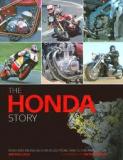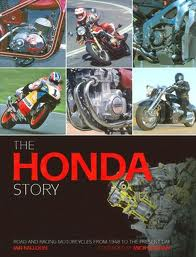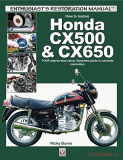Anotace
Honda have never been scared of innovation, and wielded their impressive ingenuity to the full when they designed the CX500. Mind you, it's hard to look at the CX and its offshoots today and imagine the wow! factor which kicked in when the bikes were first launched. When we think of CXs now the image which springs to mind is of the Plastic Maggot, the despatch-ridden hack, cluttered with luggage and an aftermarket fairing, ready to roll for yet another 100,000 miles. Back in 1978 it was a completely different story. The CX500 represented a quiet revolution, intended to be an efficient, low maintenance motorcycle for everyman. The spine frame and composite steel-alloy wheels were all very much as expected, but the 80-degree V-twin engine positioned transversely across the frame, set tongues wagging. At a stroke Honda moved the goalposts with liquid cooling, 4-valve heads, shaft drive and even tubeless tyres. Better yet, the twin carburettors were tucked under the fuel tank so they didn't catch an unwary kneecap or fill up with rainwater! Not everyone appreciated the bike's styling but it was hard to knock its engineered proficiency. The technological advances didn’t stop with the launch of the standard CX, and it was with the turbocharged versions that Honda really made their point. A V-twin is relatively difficult to turbocharge, when compared to the standard inline four-cylinder engines which usually get the treatment. That didn't stop Honda creating the first turbocharged production motorcycle, which was also their first fuel-injected production vehicle of any kind. The CX500 Turbo used the world's smallest turbocharger unit, just two inches in diameter. The modern PGM-FI fuel injection system, used across Honda's recent range of engines, can trace its lineage straight back to the CX650 Turbo unit. Groundbreaking? Just a bit. On top of all of that, the CX650 Turbo was a 673cc motorcycle producing 100bhp. It could carry a determined rider to a genuine 135mph, at a time when litre capacity bikes could do little better. So it’s no wonder that the CX650 Turbo was considered to have introduced; a whole new way of looking at the concept of superbikes. Here then is the story of these super bikes, including the Eurosport version and the more relaxed Custom variant. Many of the reports were written when the CXs were new, when their technology was cutting edge, and when their innovative engineering captured the imagination. Next time you see a CX it'll probably be displayed in a classic exhibition, finally receiving the appreciation it deserves. A collection of 28 articles cover this classic Honda. Road, track & comparison tests, model intros, history, service & a long term report. Models covered: CX500, CX650, Sport, L, TC, Custom, Turbo & Silver Wing. 136 pages, approx. 200 illus. SB.

























